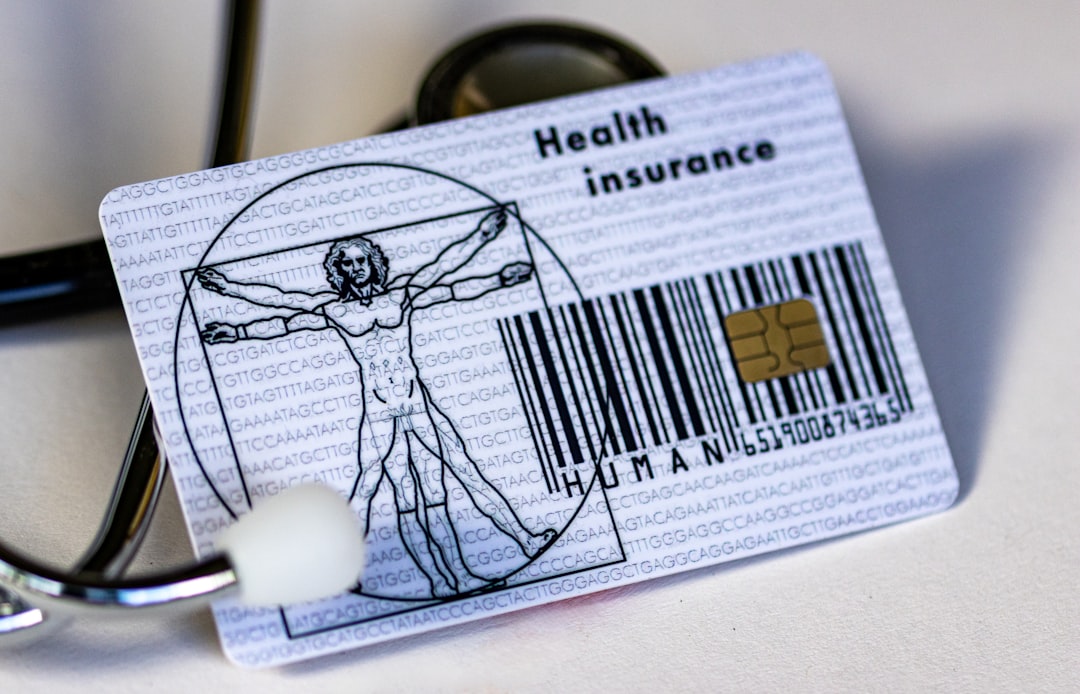

Engage prospects with a scan and streamline customer engagement with FREE QR code marketing tools by Sona – no strings attached!
Create a Free QR CodeFree consultation

No commitment

Engage prospects with a scan and streamline customer engagement with FREE QR code marketing tools by Sona – no strings attached!
Create a Free QR CodeFree consultation

No commitment
In today’s digitally driven world, QR codes have become more than a convenience; they are now essential in connecting offline patient encounters with measurable digital action. For Medicare providers, the challenge is not just about gathering feedback but ensuring it is timely, actionable, and accessible to all patients, including those less comfortable with complex apps or portals. Traditional approaches such as printed surveys, manual forms, or dedicated kiosks often result in low participation rates, lost opportunities to understand patient needs, and high administrative overhead.
A core issue for Medicare-focused organizations is that crucial patient feedback often goes uncollected or lost, especially when the process is cumbersome or the technology is unfamiliar. This gap can leave providers unaware of emerging patient concerns or satisfaction trends, making it difficult to pursue meaningful quality improvements or meet compliance requirements. QR codes offer a frictionless, accessible way for Medicare patients to share their input instantly, whether at the point of care or from home, turning feedback moments into actionable engagement.
By purposefully integrating QR codes with existing digital healthcare solutions and connected apps, Medicare providers can unlock faster, more reliable feedback cycles and reduce the risk of missing opportunities to engage key patient groups or falling out of compliance with data security standards. This guide shows how strategic use of QR codes throughout the Medicare landscape helps address pain points such as missed engagement, incomplete segmentation, and communication barriers, supporting better patient experiences and improved care outcomes. Explore sector-specific ideas in Sona QR’s healthcare strategies.

Many Medicare providers struggle with feedback models that fail to capture real patient voices, often leading to a limited understanding of satisfaction drivers and missed opportunities for improvement. The risk is clear: dissatisfied patients quietly churn or important care concerns remain unaddressed. By placing QR codes at the moments that matter, providers can bridge the gap between in-person care and digital communication. That bridge turns every interaction into a measurable signal and every scan into a record that can be analyzed and acted on.
Replacing analog workflows is the fastest way to improve outcomes. Printed surveys get lost, phone calls interrupt patients at inconvenient times, and kiosks are expensive to maintain. QR-driven mobile surveys and feedback portals reduce friction, especially when they are accessible on patients’ personal devices and do not require logins or app downloads. Connected to a secure backend, each scan can trigger automated routing of complaints, compliments, or care questions to the right team, shortening resolution times and raising overall satisfaction.
When done correctly, QR codes make feedback immediate and structured. They also help eliminate blind spots caused by disconnected paper data and unlock a repeatable process for continuous improvement across Medicare populations, including beneficiaries and caregivers.

The inability to connect offline patient moments with digital feedback is an industry-wide bottleneck. Providers lose visibility into patient sentiment, engagement decreases, and improvement efforts fracture across departments. QR codes solve this by turning paper and signage into entry points for action. A poster in a waiting area can lead to an ADA-compliant, mobile-friendly survey. A printed discharge summary can link to a personalized patient education page. Each interaction moves from static ink to dynamic data.
Medicare beneficiaries value clarity, speed, and simplicity. QR codes reduce friction while supporting compliance and operational agility. Providers can change destinations on the fly to address regulatory updates, service changes, or safety advisories without reprinting assets. Scan data creates a reliable trail of engagement that can inform staffing, operational improvements, and care experience interventions.
Embedding QR codes across discharge paperwork, appointment reminders, and informational flyers ensures that key interactions do not fade into memory. Instead, they become structured data that providers can review and act on to improve care experience metrics and outcomes.

Not all QR codes are created equal, and matching the format to the need is crucial. Medicare providers serve diverse audiences: beneficiaries, caregivers, referring clinicians, and community health partners. Each group benefits from a tailored experience that starts with the right QR type and ends with the right destination. Selecting appropriate formats keeps the process straightforward and patient friendly while preserving flexibility and analytics.
Here are the most impactful formats for Medicare settings, along with example destinations:
Dynamic QR codes are particularly valuable for healthcare adoption. They allow you to update destinations, track scans, and run A/B tests without changing printed assets. Static codes still have a place for fixed materials like durable wayfinding signs, but for feedback, education, and programs that evolve over time, dynamic codes created and managed through platforms like Sona QR are the safer and smarter choice.
Opportunities to capture feedback and engagement exist across the patient journey, yet many are underused. Providers often rely on a single touchpoint like a post-visit email survey, which can miss large segments of the Medicare population. By integrating QR codes into high-traffic materials and moments, you expand the surface area for patient input and ensure that insights are timely, representative, and actionable.
Prioritize placements that meet patients where they are. Consider accessibility, visibility, and relevance to the moment of care. Position QR codes at eye level where possible, use clear calls to action, and ensure that staff can promote and explain the benefit quickly.
Effective placement aligns QR codes with patient intent and reduces the steps required to take action. That alignment maximizes participation and delivers cleaner data for audience segmentation and quality improvement.

When feedback is disconnected from the patient journey, churn or upsell opportunities are easily missed. Integrated QR codes create actionable touchpoints that map to real interactions and needs. The following use cases reflect common Medicare workflows and measurable outcomes.
Each use case fits naturally into the patient journey. Because the action is specific to the moment, feedback is more accurate and actionable than generic, end-of-month surveys.
Incomplete segmentation leads to generic outreach that patients ignore. QR scans contain critical context: what was scanned, where, and when. By issuing unique codes for distinct patient journeys and locations, you automatically generate clean audience segments that reflect real behavior. Those segments drive targeted follow-up through email, SMS, or call outreach, ensuring timely resolution and improved satisfaction.
Medicare providers can distinguish audiences not only by stage in the care lifecycle, but also by role. Beneficiaries, caregivers, and referring clinicians have different motivations and information needs. Tagging scans by audience type and use case enables precise messaging that respects consent and privacy preferences.
With Sona QR, every code becomes a smart capture point. Scan data flows directly into your marketing and operations tools, powering retargeting and follow-up based on observed behavior rather than assumptions. Explore Sona QR’s use case library for more ideas.
Disconnected channels waste budget and dilute your message. QR codes unify physical materials and digital experiences, enabling real-time engagement and richer data collection. In Medicare-focused organizations, that connection improves both marketing and operations: appointment scheduling, telehealth access, enrollment assistance, and patient education become measurable and easier to refine.
Use QR codes to harmonize touchpoints and close attribution gaps with first-touch vs last-touch attribution. Because each code is unique, you can see which postcard drove an appointment, which event generated caregiver interest, and which waiting room sign captured the most feedback. That visibility supports smarter planning and more targeted investments.
Centralizing management with a platform like Sona QR simplifies code creation, deployment, and analytics. This makes your multi-channel strategy both consistent and adaptable as patient needs change.
Even the best strategy can falter if execution is inconsistent or untracked. A clear, repeatable process ensures your QR initiatives produce reliable results across facilities and programs. Use the following steps as a blueprint you can adapt to your organization.
Start with a single, well-defined goal. For Medicare providers, common objectives include increasing AWV bookings, collecting post-discharge feedback, or capturing caregiver contact preferences. Align the QR code’s purpose with a specific business outcome so you can measure impact confidently.
Describe what success looks like in advance. For example, target a 30 percent increase in survey completion at discharge, or a 20 percent lift in AWV confirmations from direct mail. Clear outcomes help teams prioritize resources and secure leadership support.
Select static codes for permanent, non-trackable destinations like a general website or a universal education library. Choose dynamic codes when you need to update links, track performance, run A/B tests, or retarget based on behavior. Most feedback and scheduling use cases benefit from dynamic codes managed in Sona QR. Start creating QR codes for free.
Consider the user experience along with technical needs. If your goal is a one-tap SMS to the patient experience team, configure an SMS QR. If your goal is a survey, ensure the destination is mobile-optimized, short, and accessible with clear font sizes and color contrast.
Design for clarity and confidence. Add your logo, choose high-contrast colors, and place a visible frame around the code. Use a concise, benefit-driven call to action like Scan to rate your visit or Scan to schedule your wellness exam. Include a short URL as a fallback for those without smartphones.
Test scanning in realistic conditions. Check multiple devices, lighting environments, and distances. Verify that the destination loads quickly on cellular connections and that content is accessible, including screen-reader compatibility. Adjust print size and placement based on results.
Roll out QR codes where your audience naturally engages. For Medicare providers, focus on waiting area posters, check-out desks, discharge papers, pharmacy partners, and direct mailers. At community events, add codes to banners and handouts so engagement continues after the event.
Sequence your deployments in phases so you can learn and improve. Start with three to five placements per facility and expand based on performance. Train frontline staff to introduce the QR option and explain its value to patients and caregivers.
Monitor scan data and conversions in a centralized dashboard. In Sona QR, review performance by location, time, device, and creative. Pair these insights with sentiment analysis or NPS to spot gaps and test improvements. Run A/B tests on calls to action, design treatments, and landing page copy to increase scan and completion rates.
Share results with stakeholders and close the loop with staff. Recognize high-performing teams, address bottlenecks quickly, and refresh creative quarterly to prevent fatigue. Use what you learn to refine future campaigns and allocate resources more effectively.
Disconnected data undermines trust in feedback programs. When teams cannot see which placements drive scans or how scans correlate with appointments and satisfaction improvements, momentum stalls. A robust analytics approach connects the dots from scan to action, generating insights that inform both experience initiatives and revenue-related outcomes like AWV completions and care gap closures.
Sona QR and Sona.com together turn QR engagement into a full-funnel view. Sona is an AI-powered marketing platform for identity, intent, and revenue attribution that unifies attribution with activation. Sona QR captures the scan with rich metadata and pushes it to your systems. Sona.com links that engagement to other touchpoints so you can understand the journey from first scan to appointment and beyond. That unified picture supports better planning, staffing, and investment.
The result is an analytics ecosystem that makes QR codes part of your performance strategy, not a one-off experiment. With transparency from scan to outcome, leadership has evidence to scale what works.
QR programs succeed when they are easy for patients, simple for staff, and aligned with measurable goals. Avoid sprawling deployments without clear owners and metrics. Start with focused use cases, then expand thoughtfully based on data.
Training and communication also matter. Frontline staff should feel comfortable introducing QR options and highlighting privacy and convenience. Reinforce benefits for patients and caregivers, and always provide an alternative pathway for those who prefer not to scan.
Each tip compounds the value of your QR program by increasing adoption, improving data quality, and accelerating meaningful follow-up.
Healthcare regulations around patient data are strict, particularly under HIPAA and Medicare rules. QR-enabled feedback must be designed with privacy and security as non-negotiables. This starts with minimization: collect only the data you need, avoid PHI capture when possible, and secure everything end to end with encryption.
Establish clear governance and vendor oversight. Ensure that any QR platform and downstream tools meet healthcare-grade security standards and are willing to sign Business Associate Agreements where required. Regularly audit destinations and data flows to maintain compliance as regulations and internal policies evolve.
By integrating compliance into your QR program from the start, you build patient trust and reduce risk, making it easier to scale your efforts confidently.

Medicare providers that shift from static, fragmented feedback workflows to QR-enabled programs often see rapid gains in participation and service recovery. The ability to collect feedback at the point of care or immediately afterward increases response rates and improves the freshness of insights. Teams can act faster to resolve issues and celebrate wins, which reinforces a culture of continuous improvement. For broader context on QR’s resurgence, see this healthcare marketing whitepaper%20(1)%20(1).pdf).
In addition to feedback gains, many organizations report stronger preventive care engagement when QR codes simplify next steps. When patients can confirm or reschedule an Annual Wellness Visit with one scan, completion rates rise. Similarly, targeted follow-ups after scans help close care gaps and keep patients on track with chronic condition management—trends echoed in analyses of QR in medical marketing.
Industry experts consistently emphasize the importance of embedding QR programs within existing clinical and operational workflows. Success grows when QR codes are not an add-on but part of how teams communicate, educate, and learn. With Sona QR for creation and tracking and Sona.com for attribution and journey analytics, organizations gain the infrastructure to scale QR-driven engagement with confidence.
QR codes have become a strategic imperative for Medicare providers looking to close the gap between offline patient experiences and the actionable digital feedback needed for continuous improvement. Each scan becomes a chance to deepen understanding, prevent disengagement, and drive operational enhancements while meeting the unique compliance and segmentation standards of healthcare.
Providers who commit to integrated, patient-focused QR workflows are better equipped to capture valuable insights, close care gaps, and personalize patient engagement, transforming every touchpoint into measurable value. With robust solutions for QR code creation, deployment, and secure data management, Medicare organizations can systematically upgrade care delivery, streamline marketing, and strengthen patient connections.
By adopting and refining QR-driven feedback strategies, with a focus on simplicity and compliance, Medicare providers can turn feedback into a continuous improvement engine that enhances outcomes and drives long-term organizational growth. Tools like Sona QR and Sona.com help connect scans to results so teams can scale what works and retire what does not, all while maintaining patient trust and data integrity.
QR codes have revolutionized the Medicare providers industry by transforming patient feedback collection from a cumbersome task into an efficient, real-time engagement tool. By integrating QR codes into your feedback processes, you not only streamline data gathering but also enhance patient experiences, enabling timely improvements in care quality and service delivery. Imagine instantly capturing valuable insights from patients the moment they finish their visit—insights that drive smarter decisions and elevate your practice’s reputation.
With Sona QR, creating dynamic, trackable QR codes tailored for Medicare providers is effortless. Update your feedback campaigns instantly without the hassle of reprinting materials, monitor scan data in real time, and link patient responses directly to service improvements and operational outcomes. No delays, no lost opportunities—just actionable intelligence that powers patient-centered care.
Start for free with Sona QR today and transform every scan into meaningful feedback that propels your Medicare practice forward.
QR codes provide a frictionless, accessible way for Medicare patients to share feedback instantly, improve patient engagement, reduce administrative overhead, and enable measurable, timely digital action from offline encounters.
Providers can place QR codes at key moments like check-in, discharge, and appointment reminders to collect feedback, connect scans to CRM and EHR systems for targeted follow-up, and use dynamic codes to update content without reprinting materials.
Medicare-focused organizations that integrate QR codes with existing digital health solutions and connected apps can use them to enhance feedback cycles, patient communication, and compliance with data security standards.
Best practices include using large, high-contrast codes with clear calls to action, designing for accessibility, deploying codes at strategic patient touchpoints, using dynamic QR codes for flexibility, training staff to promote usage, and tracking scan data for optimization.
QR codes convert offline materials like posters and discharge papers into digital gateways that enable patients to quickly complete surveys, access educational resources, schedule appointments, and communicate without needing apps or logins.
Use Sona QR's trackable codes to improve customer acquisition and engagement today.
Create Your FREE Trackable QR Code in SecondsJoin results-focused teams combining Sona Platform automation with advanced Google Ads strategies to scale lead generation

Connect your existing CRM

Free Account Enrichment

No setup fees
No commitment required

Free consultation

Get a custom Google Ads roadmap for your business






Launch campaigns that generate qualified leads in 30 days or less.
